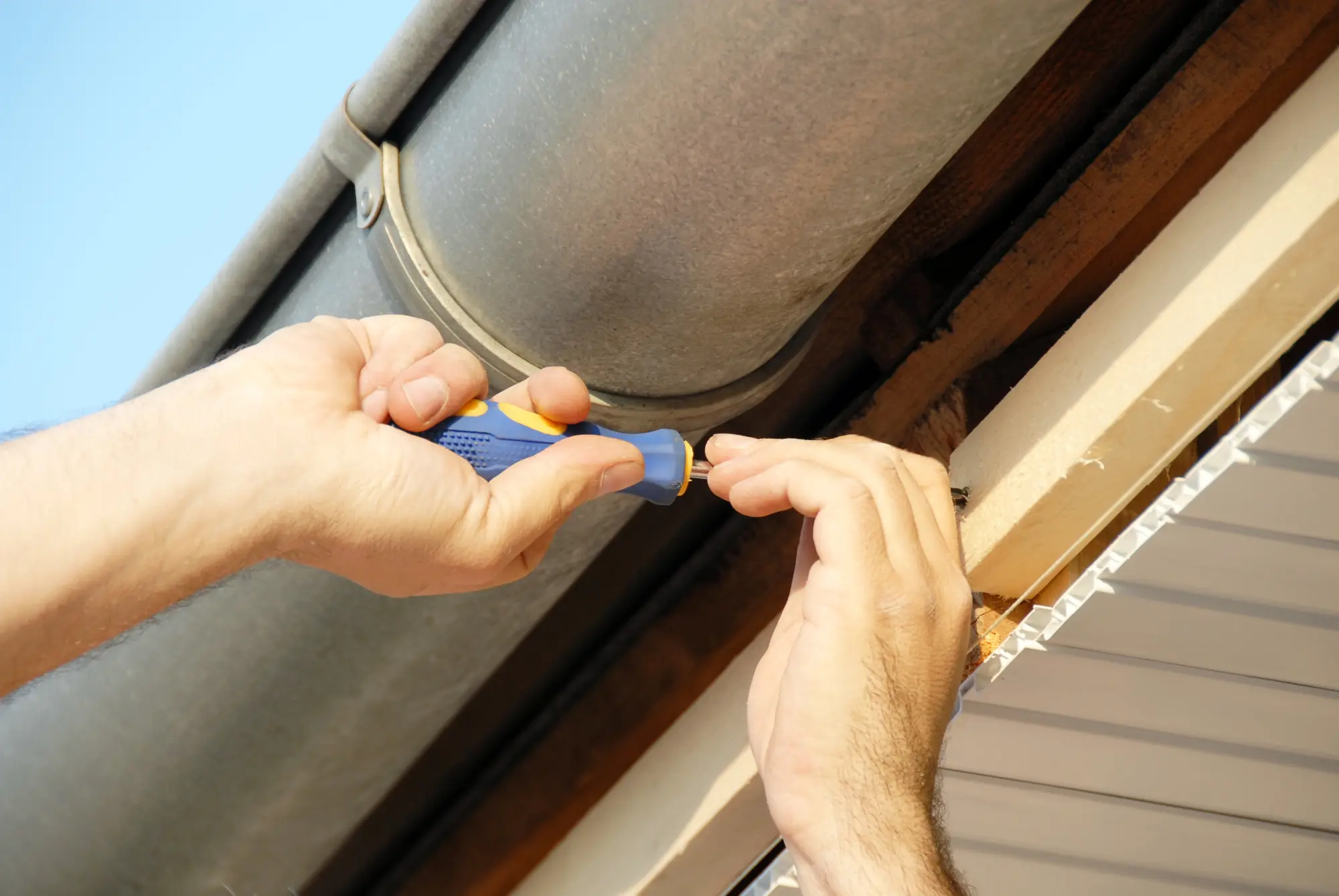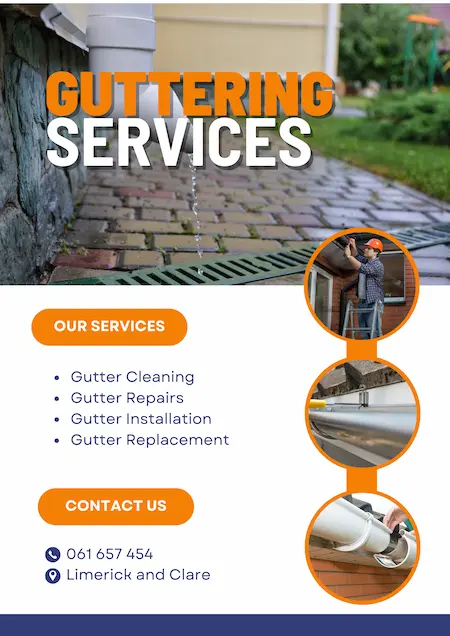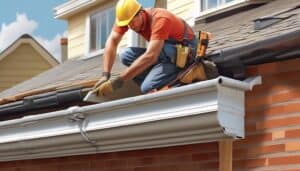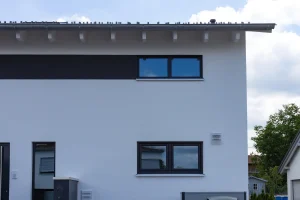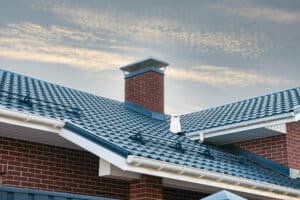Gutters are an essential component of any home, designed to protect the property by directing rainwater away from the foundation. However, when gutters start to leak, it can lead to a host of issues such as water damage, mold growth, and even structural problems. Understanding what causes gutters to leak is crucial in order to address the issue promptly and prevent further damage.
In this blog post, we will delve into the various factors that can contribute to gutter leaks. From poor installation and clogging to corrosion and weather-related damage, we will explore the common culprits behind leaky gutters. By gaining insight into these causes, homeowners can take proactive steps to maintain their gutters and ensure they function effectively in protecting their homes from water damage.
Join us as we uncover the mysteries behind leaky gutters and learn how to keep your gutter system in top condition.
Key Takeaways
- Clogged gutters can lead to water damage on the siding and interior of the home, so it is important to regularly clear out debris and consider installing gutter guards to prevent future clogs.
- Insufficient downspout drainage can cause water accumulation and damage, so it is necessary to inspect downspouts for blockages and clear them if necessary.
- Misaligned gutter sections disrupt water flow and cause leaks, so it is important to assess gutters for gaps or sections pulled away from the roofline and realign them to ensure a slight slope towards the downspouts.
- Corrosion and rust weaken gutters and lead to leaks, so it is important to regularly inspect gutters for signs of rust, clear out debris, and replace rusty fasteners and screws.
What Are Common Causes of Gutter Leaks?
Gutters can leak for a variety of reasons. Some common causes of gutter leaks include:
- Clogs: Debris such as leaves, twigs, and dirt can accumulate in gutters and cause clogs. This can prevent water from flowing properly and lead to leaks.
- Corrosion: Over time, gutters can corrode due to exposure to the elements. This can weaken the gutters and cause them to develop holes or cracks.
- Poor installation: If gutters are not properly installed or if they are installed incorrectly, they may not be able to effectively channel water away from your home, leading to leaks.
- Damage: Gutters can be damaged by falling branches, animals, or even ladders during maintenance. This damage can cause leaks to develop.
- Ice dams: In colder climates, ice dams can form on gutters, causing water to back up and seep into your home.
- Shifted gutters: Gutters that have shifted or sagged over time may not be able to properly direct water away from your home, resulting in leaks.
Regular maintenance, including cleaning gutters and inspecting for damage, can help prevent leaks and ensure that your gutters function properly.
How Does Clogged Downspout Cause Gutter Leaks?
When a downspout is clogged, water cannot flow freely through it and will instead spill over the sides of the gutter. This overflow can lead to water accumulating in the gutter, putting excess weight and pressure on it. Over time, this added weight and pressure can cause the gutter to pull away from the house or become misaligned.
Additionally, the trapped water in the gutter can seep into the fascia board behind the gutter, leading to rot and decay. This can weaken the structure of the gutter system and eventually cause leaks.
Furthermore, if water is unable to properly drain away from the house due to a clogged downspout, it can pool around the foundation and cause water damage or leaks in the basement.
In summary, a clogged downspout can cause gutter leaks by putting undue stress on the gutter system, leading to misalignment or detachment, causing water to seep into the fascia board, and creating pooling water that can damage the foundation of the house. Regular maintenance and cleaning of gutters and downspouts are essential to prevent these issues.
How Can Misaligned Gutter Sections Lead to Gutter Leaks?
Misaligned gutter sections can lead to gutter leaks due to the disruption of the smooth flow of water. When sections of the gutter are not properly aligned, water can accumulate in certain areas, causing leaks, overflow, and damage to the gutter system.
It is crucial to ensure that gutter sections are correctly aligned and these factors are checked to prevent water from seeping into your home’s foundation or causing other structural issues:
1. Water Overflow: When gutter sections are misaligned, water may not flow properly through the gutter system. This can cause water to overflow, especially during heavy rain. The excess water can seep into the gaps between the misaligned sections, leading to leaks.
2. Poor Sealing: Misaligned gutter sections may not fit together properly, creating gaps where water can escape. Over time, these gaps can widen due to the pressure of water flow, allowing more water to leak through.
3. Damage to the Gutter System: Misaligned gutter sections can put additional stress on the entire gutter system. This can lead to damage such as bent or warped sections, loose hangers, and cracked seams, all of which can contribute to leaks.
4. Water Pooling: Misaligned gutter sections can cause water to pool in certain areas instead of flowing freely through the system. Pooled water can put additional weight on the gutters and increase the likelihood of leaks developing at the joints.
To prevent gutter leaks caused by misaligned sections, it is important to regularly inspect and maintain your gutter system. Address any misalignments promptly by realigning or replacing sections as needed. Proper installation and regular cleaning can also help maintain the integrity of your gutter system and prevent leaks.
What Problems Can Arise from Gutter Leaks in Seals and Joints?
Gutter leaks in seals and joints can lead to a myriad of problems that can wreak havoc on your home. From water damage to structural issues, these leaks can cause costly and extensive damage if left unaddressed. Let’s explore the potential risks and consequences of gutter leaks in seals and joints.
- Water damage: Water leaking from the gutters can cause damage to the building’s exterior walls, foundation, and landscaping. It can also lead to mold and mildew growth, which can pose health risks.
- Structural damage: Over time, water leaks from gutters can weaken the structure of the building, leading to issues such as rotting wood, rusting metal, and compromised building integrity.
- Basement flooding: If water from gutter leaks is not properly diverted away from the building, it can seep into the basement and cause flooding, leading to costly repairs and potential damage to belongings.
- Pest infestations: Standing water in clogged gutters can attract pests such as mosquitoes, termites, and rodents, which can create further problems for the building and its occupants.
- Ice dams in winter: Gutter leaks can contribute to the formation of ice dams during winter months, which can damage the roof, gutters, and underlying structure.
To prevent these problems, it is important to regularly inspect and maintain gutters, ensuring that seals and joints are properly sealed and any leaks are promptly addressed.
How Does Inadequate Slope or Pitch Contribute to Gutter Leaks?
Inadequate slope or pitch in gutters can contribute to leaks by preventing proper drainage of water. Gutters are designed to collect rainwater and direct it towards downspouts for proper drainage. If the gutters do not have enough slope or pitch, water may pool and accumulate in certain areas instead of flowing towards the downspouts. This standing water can put pressure on the seams and joints of the gutters, causing them to weaken and potentially leak.
Additionally, stagnant water in the gutters can attract debris such as leaves, twigs, and dirt, which can further block the flow of water and lead to overflow. This overflow can cause water to spill over the sides of the gutters, potentially damaging the exterior of the building or creating conditions for water to seep into the walls or foundation, leading to leaks.
Therefore, it is important to ensure that gutters have the appropriate slope or pitch to facilitate proper water drainage and prevent leaks. Regular maintenance and cleaning of gutters are also essential to prevent blockages and potential damage.
How Corroded or Rusted Gutters Lead to Gutter Leaks?
Gutters play a crucial role in protecting our homes from water damage by channeling rainwater away from the roof and foundation. However, when gutters become corroded or rusted, they can no longer effectively perform this function. The corrosion weakens the structure of the gutters, making them prone to leaks. As a result, water can seep into the walls, roof, and foundation of a home, causing costly damage over time. In this article, we will explore how corroded or rusted gutters can lead to gutter leaks and the importance of addressing this issue promptly.
Corroded or rusted gutters can lead to gutter leaks in several ways:
- Weakened Structure: Corrosion and rust can weaken the structure of the gutter, making it more susceptible to leaks. Over time, the metal can deteriorate, forming holes or cracks where water can escape.
- Blockages: Rust and corrosion can create rough surfaces inside the gutter, which can lead to the accumulation of debris such as leaves, twigs, and dirt. These blockages can prevent water from flowing properly, causing it to pool and eventually leak through any weak spots in the gutter.
- Expansion and Contraction: Metal gutters expand and contract with changes in temperature. Corrosion and rust can affect the flexibility of the metal, causing it to warp or buckle. This can create gaps or separations in the gutter system, allowing water to escape.
- Corrosion at Seams: Gutters are typically joined together at seams, which are prone to corrosion and rust. If these seams become corroded, they can weaken and eventually separate, leading to leaks along the joints.
Overall, it’s important to regularly inspect and maintain your gutters to prevent corrosion and rust, which can ultimately lead to leaks and water damage to your home.

How Does Insufficient Downspout Drainage Lead to Gutter Leaks?
When there is insufficient downspout drainage, water can accumulate in the gutters. This can lead to several issues that ultimately result in gutter leaks:
- Weight of Water: The excess water collected in the gutters due to poor drainage can increase the weight the gutters have to bear. Over time, this added weight can cause the gutters to sag or pull away from the house, creating gaps where water can leak through.
- Ice Dams: In colder climates, insufficient drainage can lead to the formation of ice dams in the gutters. When snow or ice melts and cannot properly drain through the downspout, it refreezes at the edge of the roof or in the gutters. This can cause damage to the gutter system and result in leaks.
- Clogs and Debris: If water is not able to flow freely through the gutters due to poor drainage, it can become stagnant and collect debris such as leaves, twigs, and dirt. This buildup can block the flow of water even further, causing it to overflow and potentially seep into the roof or walls, leading to leaks.
- Corrosion: Standing water in the gutters due to inadequate drainage can accelerate the corrosion of the gutter material, especially if the gutters are made of metal. Corrosion weakens the gutters and makes them more susceptible to developing holes or cracks through which water can leak.
In summary, insufficient downspout drainage can lead to water accumulation, increased weight on the gutters, ice dams, clogs, debris buildup, and corrosion — all of which contribute to gutter leaks. It is important to ensure proper downspout drainage to maintain the integrity of your gutter system and prevent leaks.
How Can You Fix Gutter Leaks Effectively?
Addressing gutter leaks promptly, you’ll prevent water damage to your home’s structure and save on costly repairs.
To fix gutter leaks effectively, you can follow these steps:
- Locate the source of the leak: Check the gutters for any visible holes, cracks, or gaps where water may be escaping.
- Clean the gutters: Remove any debris, leaves, or dirt that may be blocking the flow of water in the gutters. This will help you see the leaks more clearly.
- Dry the area: Make sure the gutter is completely dry before attempting to repair the leak. Use a towel or cloth to remove any remaining moisture.
- Apply gutter sealant: Use a waterproof gutter sealant to patch up the leaks. Apply the sealant generously over the damaged area and make sure it is fully covered.
- Use gutter patching materials: For larger holes or gaps, you can use metal flashing, aluminum patches, or gutter tape to cover and seal the leaks.
- Check the downspouts: Make sure the downspouts are clear of any clogs or obstructions that may be causing water to back up and leak from the gutters.
- Test the repair: After applying the sealant or patching material, run water through the gutters to check if the leak has been fixed. Monitor the area for any signs of water leakage.
- Perform regular maintenance: To prevent future leaks, regularly clean and inspect your gutters for any damage or clogs. Trim overhanging branches that may be causing damage to the gutters.
By following these steps and ensuring proper maintenance, you can effectively fix gutter leaks and prevent water damage to your home.
